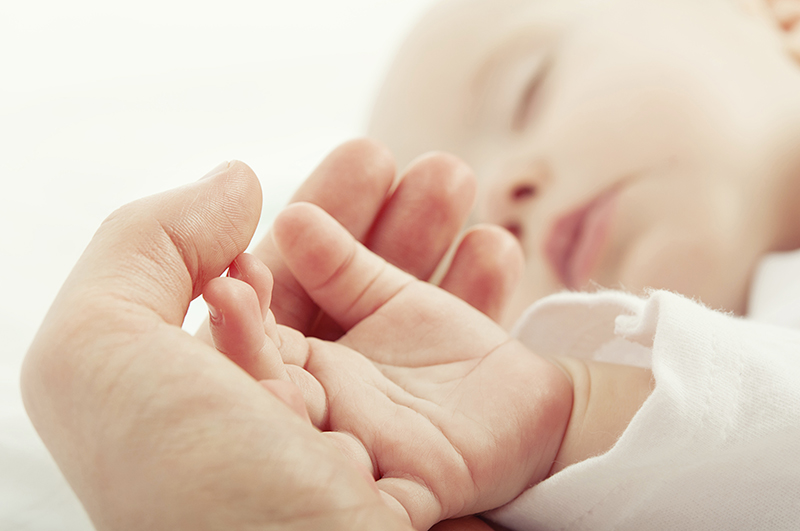Birth Outcomes and Assisted Reproductive Technology
Subertility may account for some elevated risks attributed to in vitro fertilization and other ART procedures

Birth outcomes for babies whose mothers used assisted reproductive technology (ART) are better in some cases, and worse in others, than for subfertile women who did not use ART, according to a first-of-its-kind study led by Boston University School of Public Health (SPH) researchers.
Those findings, published online in the journal Fertility and Sterility, suggest that underlying subfertility, distinct from the use of ART, may account for some of the elevated risks in birth outcomes attributed to the use of in vitro fertilization and other ART procedures.
SPH researchers on the study included Eugene Declercq, professor of community health sciences and the study’s lead author; Candice Belanoff, clinical assistant professor of community health sciences; and Howard Cabral, professor of biostatistics.
They found that the risks of preterm birth and low birth weight were higher for singletons (single babies) born to mothers who had ART than for those who had fertility problems but did not use ART. But the risks of perinatal death—stillbirths or deaths within one week of birth—were no higher for mothers with ART than for fertile women, while they were significantly higher for singletons born to subfertile mothers. And for twins, the risks of death among ART births were significantly lower than for either subfertile or fertile women.
The study is the first population-based US comparison of birth outcomes for women who received fertility treatment and those with subfertile indicators who did not use ART. The growth in the use of ART has raised concerns about a range of perinatal outcomes, including an excess of preterm births, low birth weight, and neonatal death. But because previous studies have compared ART birth outcomes with spontaneous conceptions, it has remained unclear whether differences in outcomes are related to underlying subfertility or other factors, such as the older average age of mothers.
The study suggests that both underlying subfertility and ART itself may influence outcomes. Among singletons, the differences in rates of preterm birth and low birth weights were more pronounced when comparing the ART group to fertile women than to subfertile women, indicating that underlying fertility problems may play a role in those outcomes.
“Overall, these (findings) suggest an underlying risk associated with subfertility, distinct from that which may result from ART,” the authors say.
Among twins, the study suggests that babies born after ART appear to have better outcomes. ART twin births compared with subfertile births had a longer mean gestational age, lower rate of very premature delivery and very low birth weight, and a much lower rate of perinatal death.
While the authors reached no conclusions, they say one possible explanation for the better ART outcomes was “the special baby” hypothesis, which posits that extra attention given to ART births by both parents and caregivers may contribute to more favorable outcomes. Mothers in the ART group tended to be older and more likely to deliver by cesarean section than the other groups studied.
“It may be possible that ART-related births involved greater attention to care,” the authors say, adding that “more sensitive and comprehensive measures of prenatal care than are currently available on a population basis will be necessary to determine if a ‘special baby’ hypothesis is supported.”
The study is the first one published by a collaboration dubbed MOSART—for the Massachusetts Outcomes Study of Assisted Reproductive Technologies—which brings together SPH childbirth experts with researchers from five other institutions to probe how ART influences health outcomes for women and children. The collaboration is funded through a five-year grant from the National Institutes of Health’s National Institute of Child Health and Development.
The study links detailed clinical information on ART treatment from all ART clinics in Massachusetts from 2004 to 2008 with data on births, fetal deaths, and hospital records in the state. The subfertility comparison group was developed by means of an algorithm that conservatively identified births to women with indicators of subfertility, either through diagnosis codes or maternal reporting.
Declercq says the study is an important first step in “extricating the possible risks of ART from underlying infertility or maternal demographic and health risks.” He hopes for further research taking advantage of the power of linking clinical and population data to examine ART outcomes for both infants and mothers.
Infertility affects an estimated 12 to 15 percent of women of reproductive age. The use of in vitro fertilization and other fertility-enhancing treatments has risen steadily in the US. Treatment with assisted reproductive technologies resulted in 65,160 live born infants in the US in 2012, representing 1.6 percent of all US births.
Besides SPH, the team included researchers from Michigan State University, Massachusetts Department of Public Health, Dartmouth College, Massachusetts General Hospital, and Brigham and Women’s Hospital.